Cities function on the simple hierarchy of production and supply. While meat and produce are procured from neighbouring rural areas, wholesale markets (aka Mandi) are the only points of distribution for the city.
As cities grow, these wholesale markets are pushed to the periphery to ensure no interference in daily functioning. This relocation creates newly developed fragments, which are not fully equipped and planned to cater to the same.
This in turn creates a need to organise the flow and rethink the planning of the wholesale markets in a way that can accommodate the change.
To study the dynamics of this impending change, I chose the wholesale market of Ghazipur in the city of Delhi to illustrate my ideas and plans for the proposal.
Inspiration has been taken by the ‘Informal Chaos’ of the existing wholesale markets. The Concept focuses on various types of chaos interacting with each other and still producing a fully functional system. Analysing the dynamics of Goods chaos, Stakeholder chaos (buyers, retailers, labourers and vendors) and Circulation chaos (pedestrian and vehicular), the design revolutionizes the functioning into an ‘Ordered chaos’.
Key features of the design proposal-
Traffic segregation – Indian market systems have a variety of transport vehicles engaged in the movement of goods. To accommodate the same, lanes have been designed along with loading and offloading areas and parking for different sized vehicles.
Introduction of junctions for informal activity – A peculiarity of the Indian markets is that it is hard to ascertain the beginning and end of the market from a single vantage point. ‘T’ and ‘L’ junctions have been incorporated to increase flexibility. This gives rise to nooks and crannies that enable them to be used as areas for informal activities.
Shop Sizes –Five shop modules of variable volumes have been designed. This catalogue of shop sizes will cater better to the needs of the merchants pertaining to different scales of business.
Permeability – A clear demarcation of areas has been designed for sold and unsold goods. Unsold goods are unloaded in the basement and then transferred vertically to a confined common court. These private courts then service individual shops which form a cluster.
Spill out areas – The shopkeepers have a tendency for extending beyond the area assigned to them. Keeping this in mind, the shops have been designed with a certain spill out areas towards the frontage.
Labour Dormitory – a resting space is designed on the terrace of each shop unit. It is provided for informal labourers, where they can rest during downtime.
This thesis creates a new perspective of a wholesale market design by weaving functionality with organic Indian character. Deviating from the customary redevelopment guidelines, this design intends to increase efficiency and provide a wholesome enhanced stakeholder experience.
Views:
Drawings





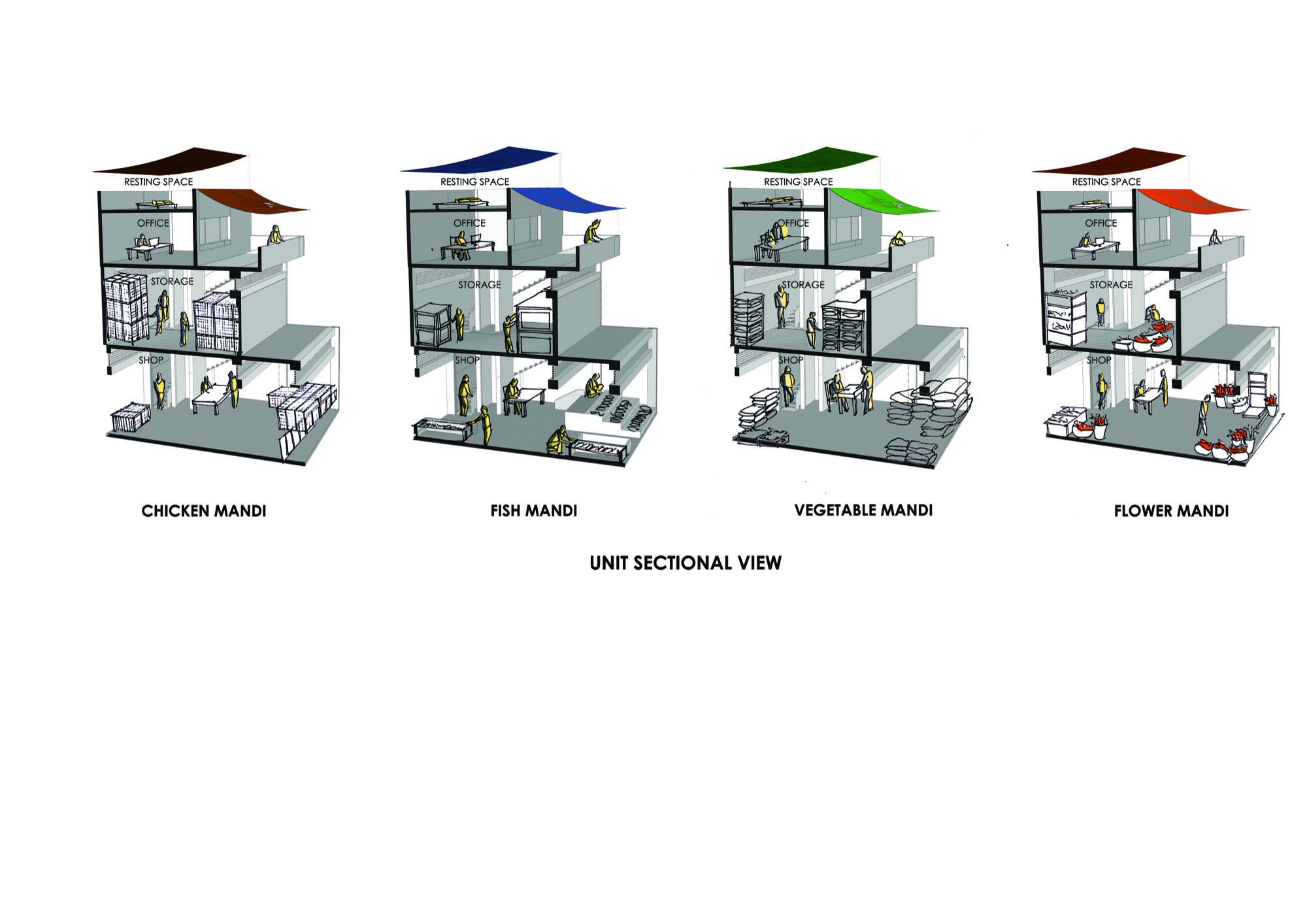
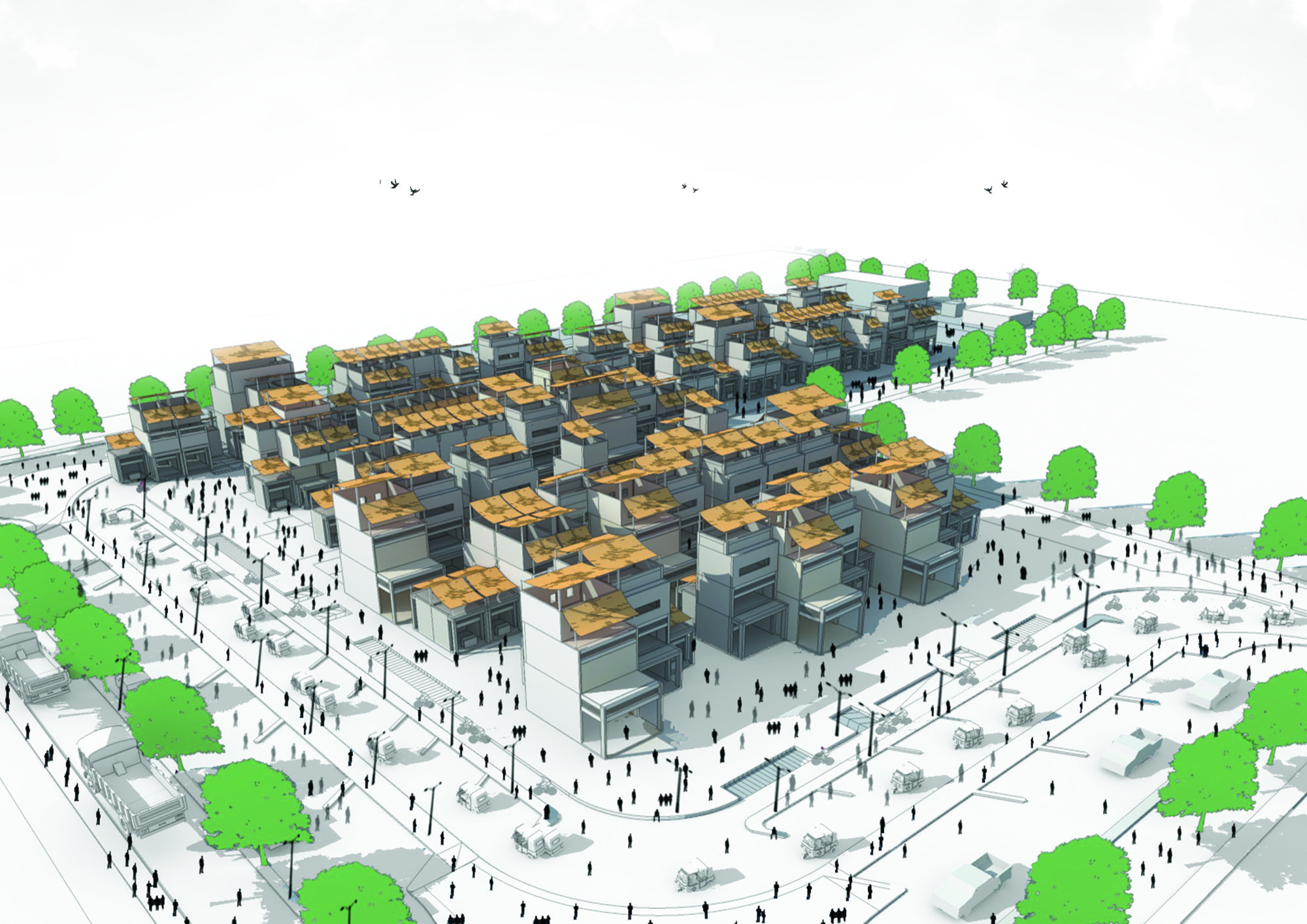



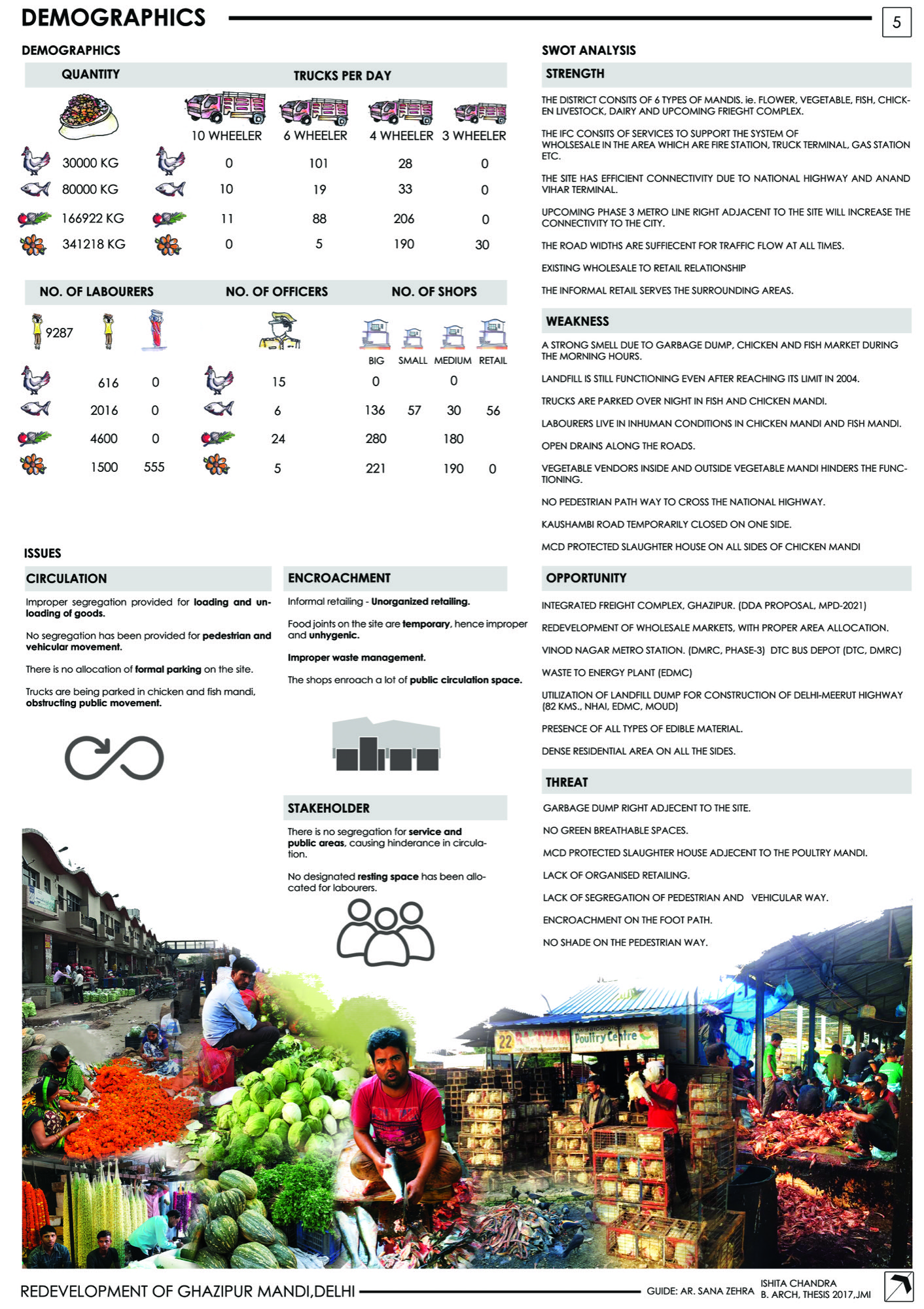
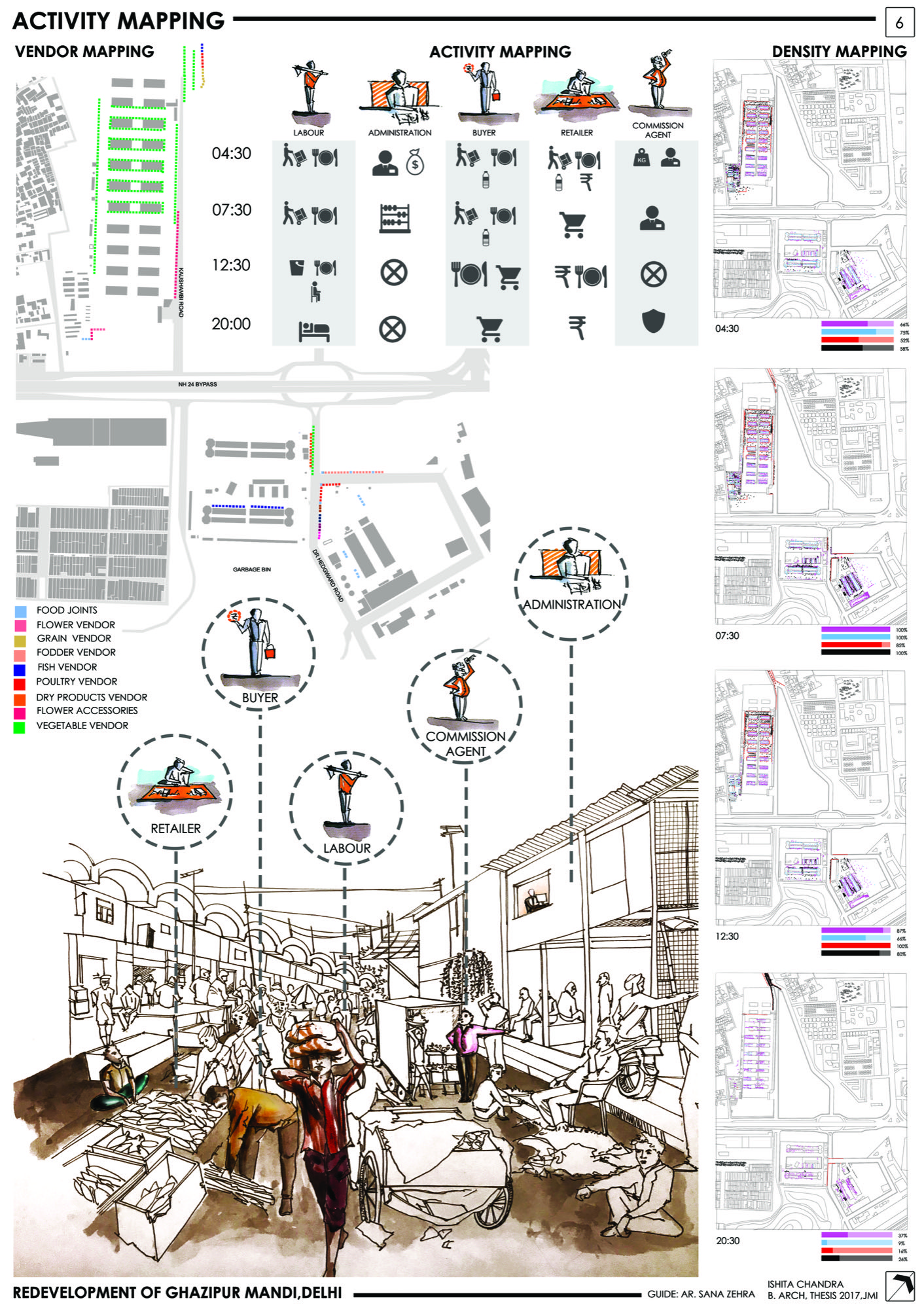
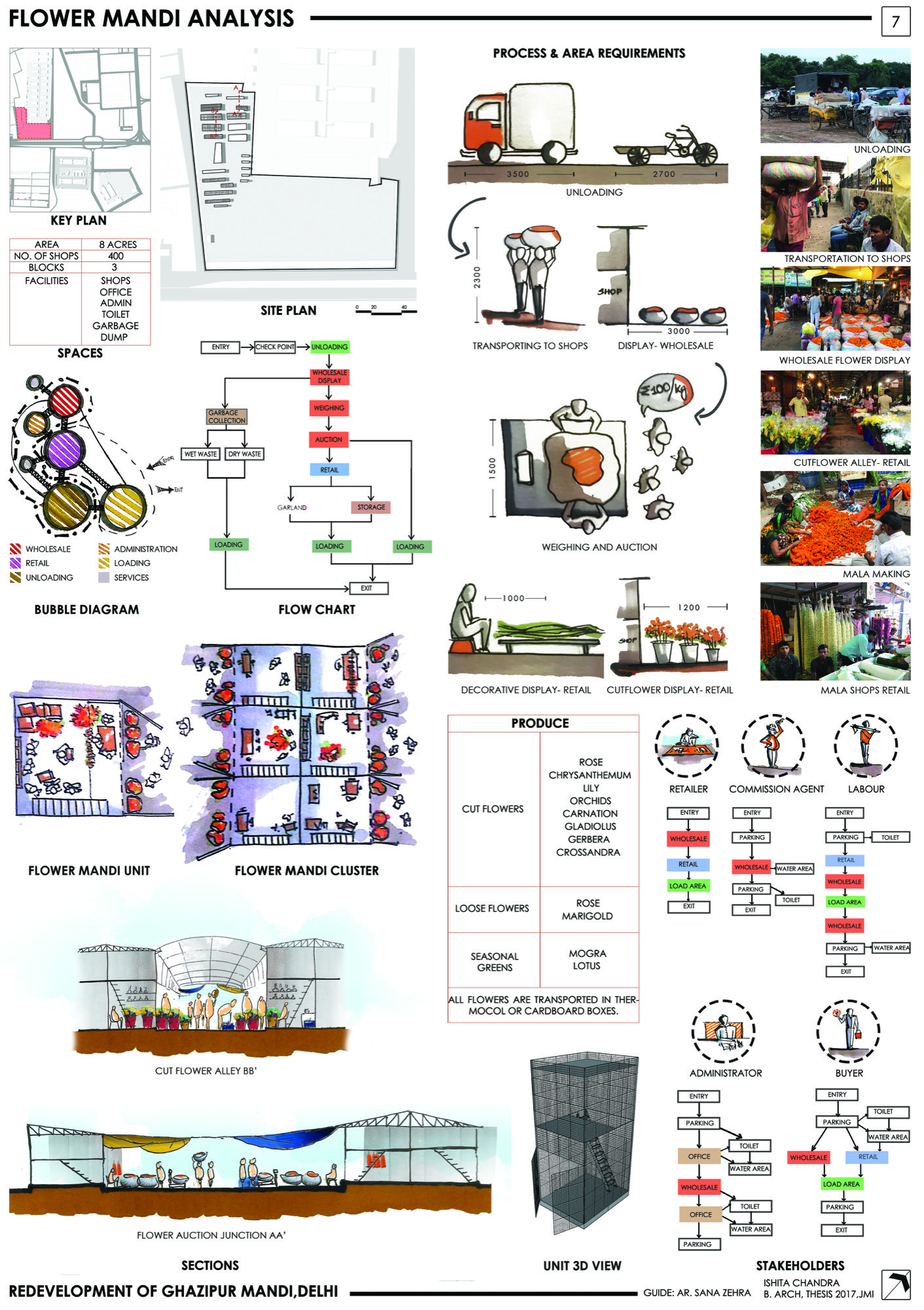

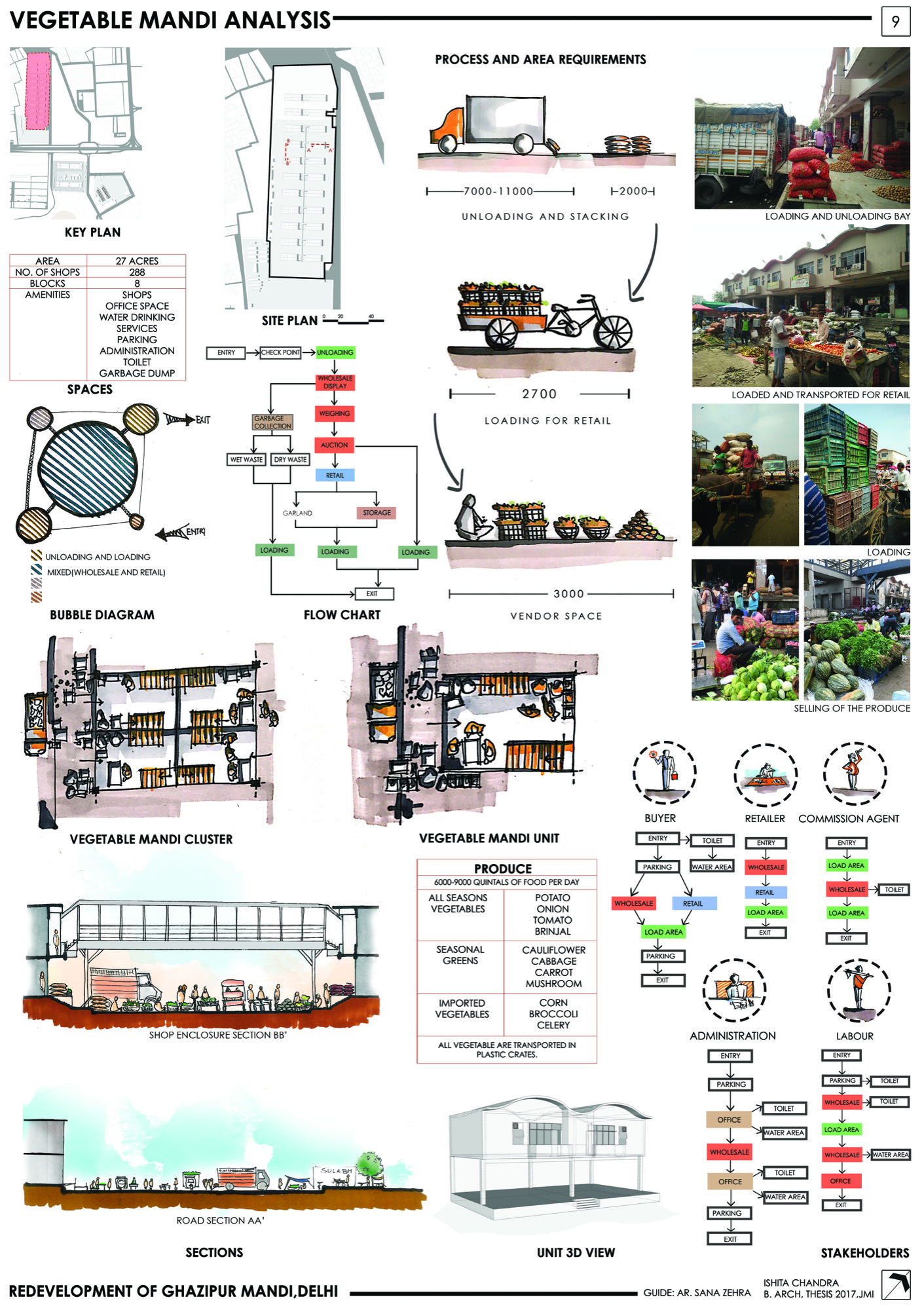
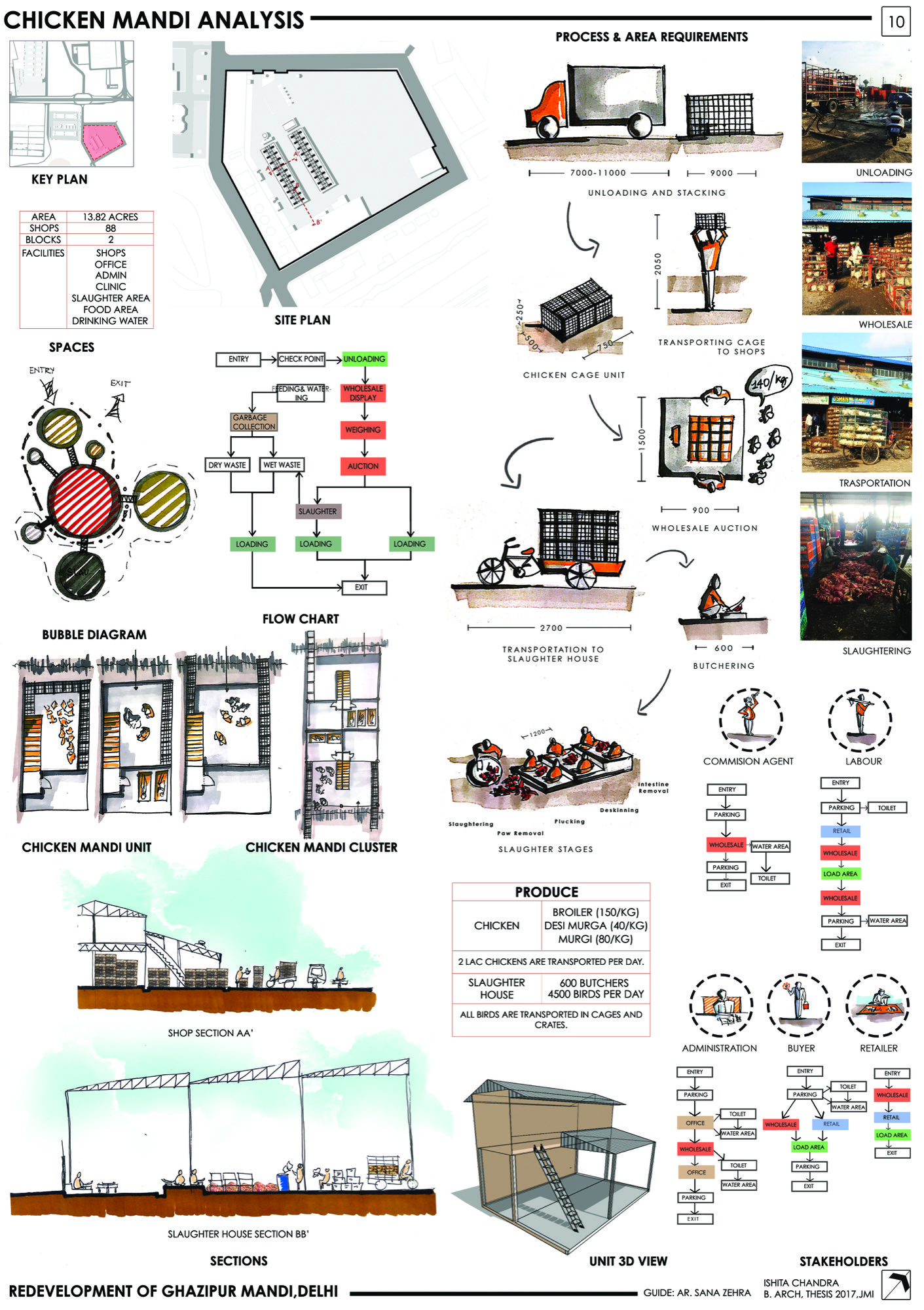





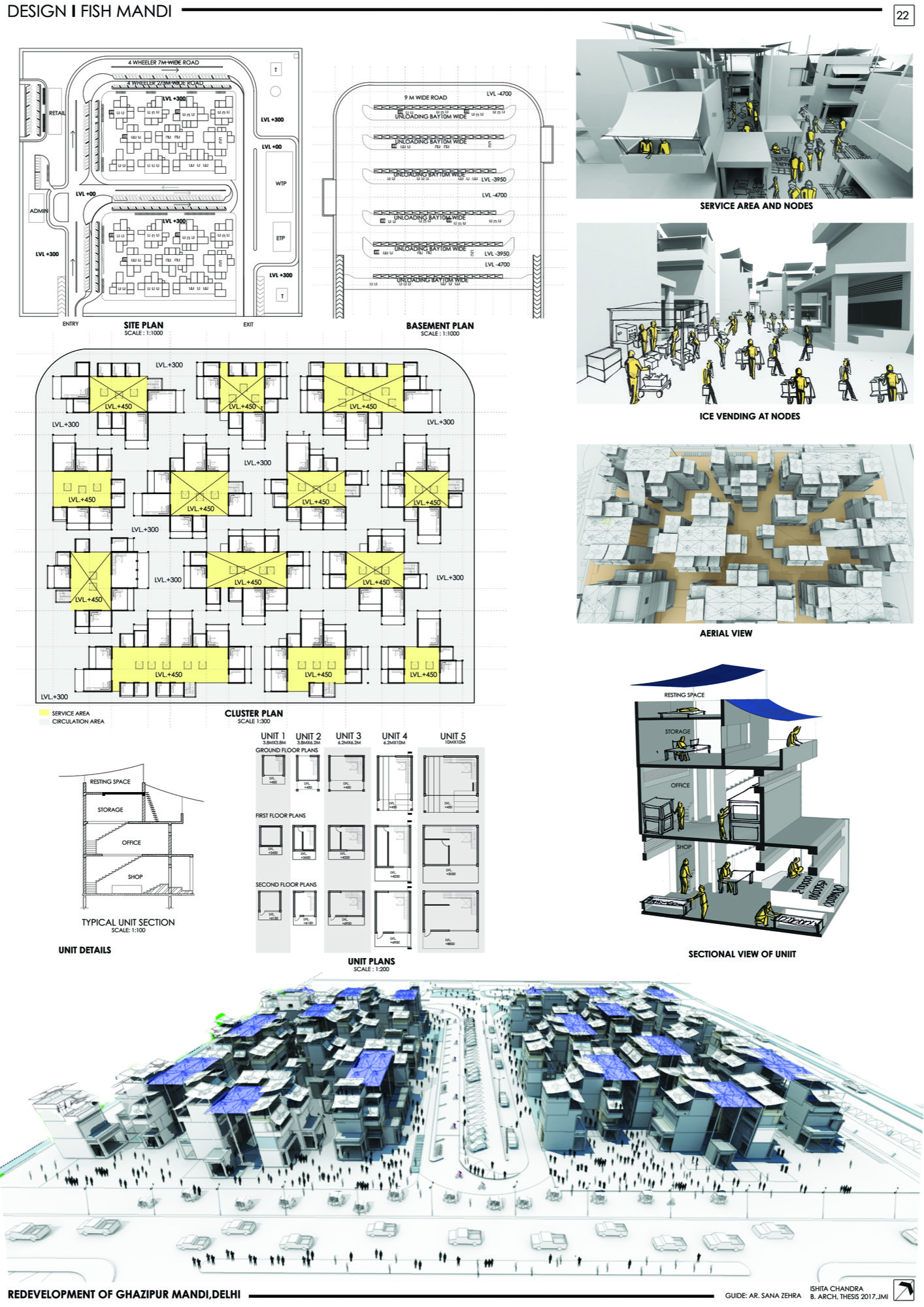

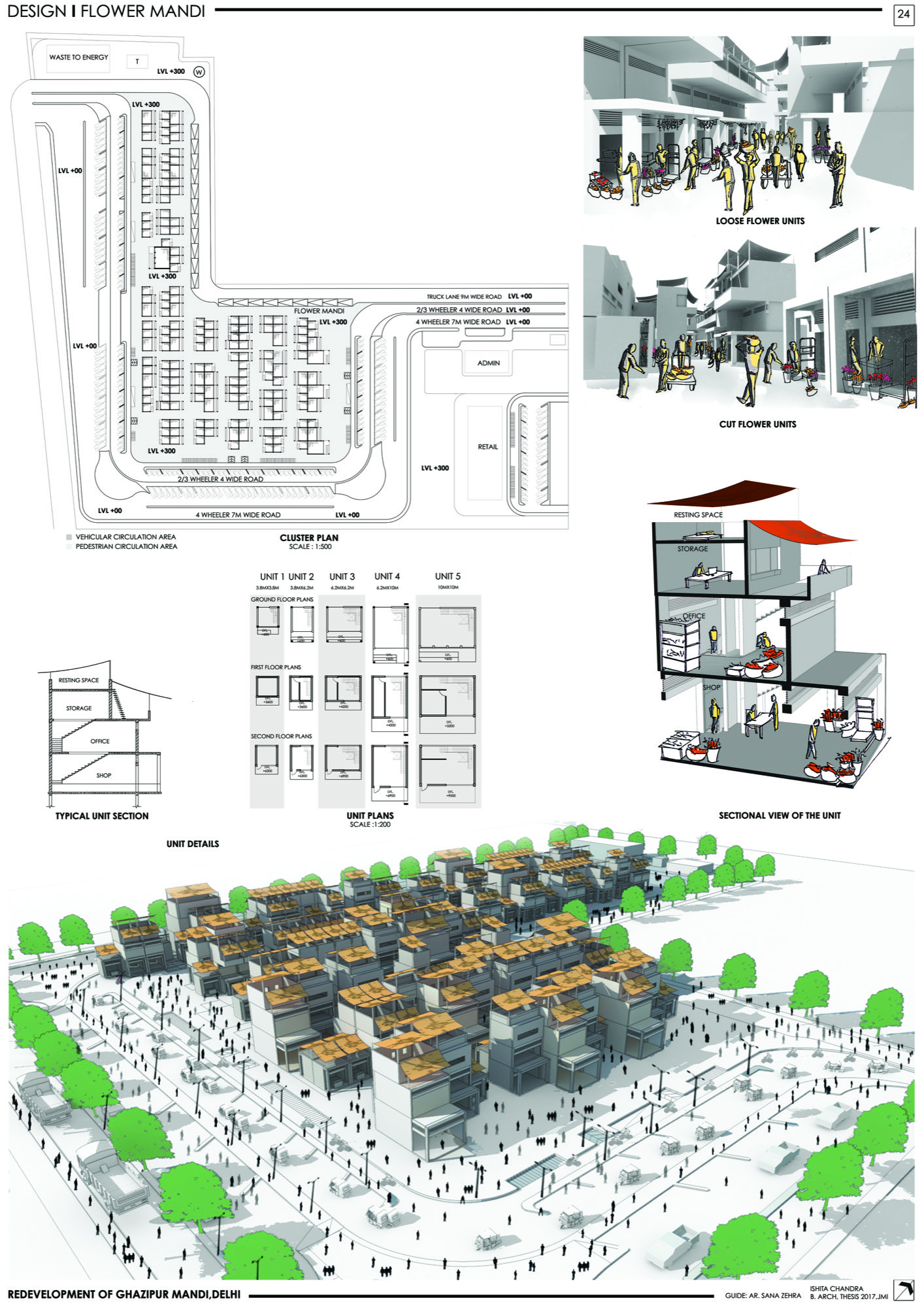






3 Responses
Very good work.
good work dear.
Can you please share your contact, so I can talk with you?